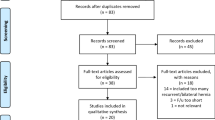Abstract.
The EU Hernia Trialists Collaboration was established to provide reliable evaluation of newer methods of groin hernia repair. It involved 70 investigators in 20 countries. The aim was to perform systematic reviews and enhance the value of individual studies by reanalysis of data from randomised controlled trials in meta-analyses. Forty-one eligible trials of laparoscopic versus open groin hernia repair were identified involving 7161 participants (with individual patient data available for 4165). Meta-analysis was performed, using individual patient data where possible. Operation times for laparoscopic repair were longer and there was a higher risk of rare serious complications. Return to usual activities was faster, and there was less persisting pain and numbness. Hernia recurrence was less common than after open non-mesh repair but not different to open mesh methods. The review showed that laparoscopic repair takes longer and has more serious complications, but recovery is quicker with less persisting pain. Reduced hernia recurrence was related to the use of mesh rather than the method of mesh placement.
Similar content being viewed by others
Author information
Authors and Affiliations
Additional information
Electronic Publication
Rights and permissions
About this article
Cite this article
Grant, A. Laparoscopic versus open groin hernia repair: meta-analysis of randomised trials based on individual patient data. Hernia 6, 2–10 (2002). https://doi.org/10.1007/s10029-002-0050-8
Received:
Accepted:
Published:
Issue Date:
DOI: https://doi.org/10.1007/s10029-002-0050-8




